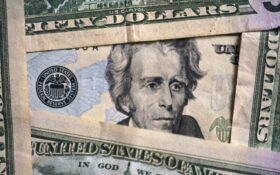Inflation in the United States has eased for the second consecutive month in May, offering hope that the acceleration of prices that occurred earlier this year may have passed. This trend, if it continues, could bring the Federal Reserve closer to cutting its benchmark interest rate from its 23-year high.
The closely watched “core” index, which excludes volatile food and energy costs, rose 0.2% from April to May, down from 0.3% the previous month and the smallest increase since October. On a year-over-year basis, core prices climbed 3.4%, lower than last month’s 3.6% rise and the mildest increase in three years.
The Fed officials, who will conclude their latest policy meeting later Wednesday, are closely examining each month’s inflation data to gauge their progress in combating rising prices. Despite the moderation in overall inflation, essentials such as groceries, rent, and health care remain significantly more expensive than they were three years ago, which continues to be a source of public discontent and a political threat to President Joe Biden’s re-election bid.
Other economic indicators suggest that the economy is healthy, with low unemployment, robust hiring, and consumers spending on travel, dining out, and entertainment.
Wednesday’s report indicated that consumers are starting to experience some relief from the price spikes of the past three years. Grocery costs remained unchanged, on average, from April to May, and have risen just 1% over the past 12 months, although they are still about 20% higher than three years ago. Average gas prices also fell 3.6% nationally from April to May, though they remain 2.2% higher than a year earlier.
Later Wednesday, the Fed’s policymakers are expected to reduce their forecast for interest rate cuts by year’s end to two, down from three in their previous forecast in March. The inflation slowdown, if sustained, makes two cuts more likely, probably starting in September.
Small-business owners are reporting less pressure from rising costs of parts and raw materials compared to a year ago, suggesting they are facing less need to pass on higher expenses to customers.
The prices of airfares, furniture, and clothing all fell in May, helping to keep inflation in check. Auto insurance costs, which have soared in recent months, dipped slightly from April to May but remain more than 20% higher than a year earlier.
Economists point to real-time measures of new rents, which show barely any increase, as builders have completed a flood of new apartment buildings.
This slowdown in new lease costs should feed into the government’s inflation measures over time, acting as another factor lowering inflation.
Other signs also suggest that inflation will continue to cool in the coming months, with Americans, particularly lower-income households, pulling back on their spending. In response, several major retail and restaurant chains have announced price cuts or deals.
The Associated Press contributed to this article.
